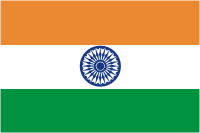
About 1 hour's drive from Agra is the abandoned capital city of the great Mughal Emperor Akbar in the 16th Century. Part of a line of seven Mughal rulers of India in the middle ages, Akbar is easily considered the most successful due to his ability to compromise among the many social and religious factions of India. He took three wives - one Muslim (from Persia), one Christian (from Goa, a Portuguese trading colony on the west coast of India), and one Hindu from the south of India. Unlike most of the other Mughal rulers, he was able to functionally include much of this diversity in his administration of northern India - which brought peace and stability during his 16 year reign from this capital city.
Although the city remained in use after his death, it was eventually abandoned due to water scarcity problems.
Our trip to Fatehpur Sikri (translates to "City of Victory") was a difficult one as all four of us were experiencing some form of discomfort due to the transition (food, environment, pollution, etc.). It was incredibly hot out (at least 90F or higher) and after visiting Fatehpur Sikri we would continue to drive for 5 additional hours to the royal city of Jaipur in the state of Rajasthan.
 Fatehpur was an interesting place and I "made a offering" at the white marbled Mosque in order to participate in a small prayer ceremony. It involved shedding my shoes (of course) and donning a kufie (Islamic prayer cap worn by men) and spreading a large tapestry in the central sanctum of the mosque. Afterwards I threw rose petals over the tapestry (I was instructed to do this despite not sharing any common language) as prayers from the Koran were being recited by the men behind me. It was a neat experience.
Fatehpur was an interesting place and I "made a offering" at the white marbled Mosque in order to participate in a small prayer ceremony. It involved shedding my shoes (of course) and donning a kufie (Islamic prayer cap worn by men) and spreading a large tapestry in the central sanctum of the mosque. Afterwards I threw rose petals over the tapestry (I was instructed to do this despite not sharing any common language) as prayers from the Koran were being recited by the men behind me. It was a neat experience.Check out the insane lattice work (done in MARBLE!) inside the mosque here - I can't imagine the painstaking work required to do this. This corridor is just outside the prayer room which I was not appropriate to photograph.



1 comment:
Quick one on Sikri. Hope you had a great time in Jaipur.
When free, read another piece on Sikri at http://www.ghumakkar.com/2008/01/29/a-visit-to-the-abandoned-city-of-fatehpur-sikri-part-i/ much more detailed one.
Post a Comment